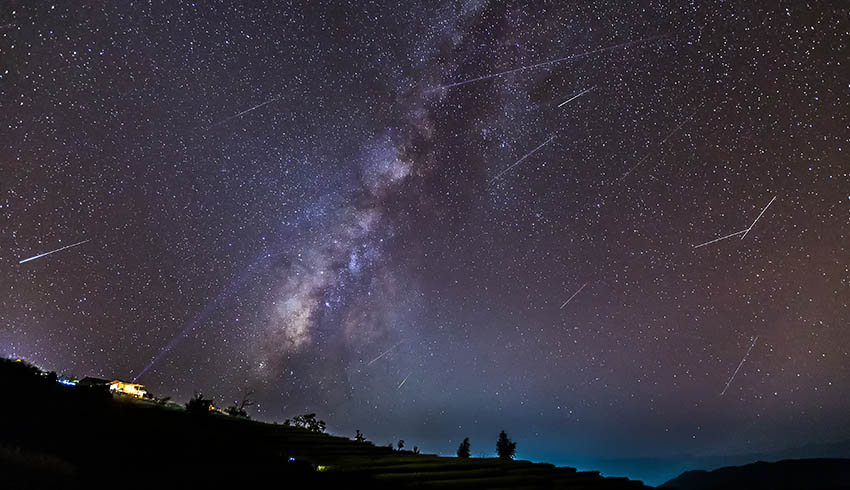The MWA is located in one of the most radio-quiet locations in the world, at CSIRO’s Murchison Radio-astronomy Observatory in outback Western Australia.
It is a precursor to the $2 billion-plus Square Kilometre Array (SKA) radio telescope that will be built in Australia and South Africa over the next decade. By studying the early universe with the MWA, we can better understand how it evolved into the one we see today, providing a clear path forward to the SKA coming online in a few years.
The project involves an enormous 200 terabytes of data. This is roughly the same as downloading all 73 episodes of Game of Thrones 1,800 times.
Associate professor Cathryn Trott, from the Curtin University node of ICRAR and the ARC Centre of Excellence for All-Sky Astrophysics in 3D (ASTRO 3D), said, “We’re looking for the first stars and galaxies that formed after the Big Bang almost 13 billion years ago.
“The signals we’re looking for have travelled through the vast and expanding universe for billions of years and are incredibly weak.”
The data travelled from the telescope to the Pawsey Supercomputing Centre in Perth, one of Australia’s tier one national high performance computing facilities and a long-standing and successful joint venture of CSIRO and WA’s four public universities, where they were stored and processed in painstaking fashion to extract the signals the team were searching for.
"After their long journey, they wash over the Earth as low-frequency radio waves, which can be easily drowned out by the radio noise we humans make and by the radio hum of the rest of the universe," Trott said.
Pawsey director Mark Stickells said that this is another example of great scientific collaboration that positions WA as an important research hub.
“Radio astronomy is a key research domain supported by Pawsey and this industry collaboration strengthens and accelerates the impact of the science undertaken using world-class infrastructure and local expertise,” Stickells explained.
Of the 700 hours of observations sent to Pawsey from the telescope, 450 hours were selected for further processing.
Stickells added, "The Pawsey Supercomputing Centre is an essential part of the MWA experimental infrastructure and plays an important role in supporting Australia’s efforts to build the SKA in WA."
The data was transferred to DUG’s supercomputer in West Perth, where its software engineering team optimised the processing algorithms and delivered the processed data in record time.
DUG is a technology company, with deep roots in software development and big data processing in the exploration of oil and gas. From its humble beginnings in a shed in Subiaco, it now owns and operates some of the largest computational systems in the world and provides high-performance computing as a service (HPCaaS) through its DUG McCloud offering.
The WA company runs a 10 PFlop supercomputer in Perth, with a total compute capacity of 30 Pflop in multiple locations around the world.
DUG founder and managing director Matt Lamont added, “We feel privileged to be involved in this incredibly interesting project. DUG is comprised primarily of physicists and mathematicians focused on developing algorithms and processing data on our own high-performance computer network.”
ICRAR deputy director Professor Steven Tingay said the collaborative effort really highlighted some of WA’s key strengths.
“At one end we have an innovative telescope that’s been operating in the mid-west for the past six years, and at the other we have Australia’s investment in its high-performance computing network,” he said.
“In between, we have some of the brightest minds in astrophysics and supercomputing working with DUG, a world-leading software and computing company.
“The fact that all of this has grown up in Western Australia is evidence that we can harness the best of innovation in academia and industry and do our part to fuel WA’s economic future.”
‘Deep multi-redshift limits on Epoch of Reionisation 21 cm Power Spectra from Four Seasons of Murchison Widefield Array Observations’, was published in the Monthly Notices of the Royal Astronomical Society on 24 March 2020.

